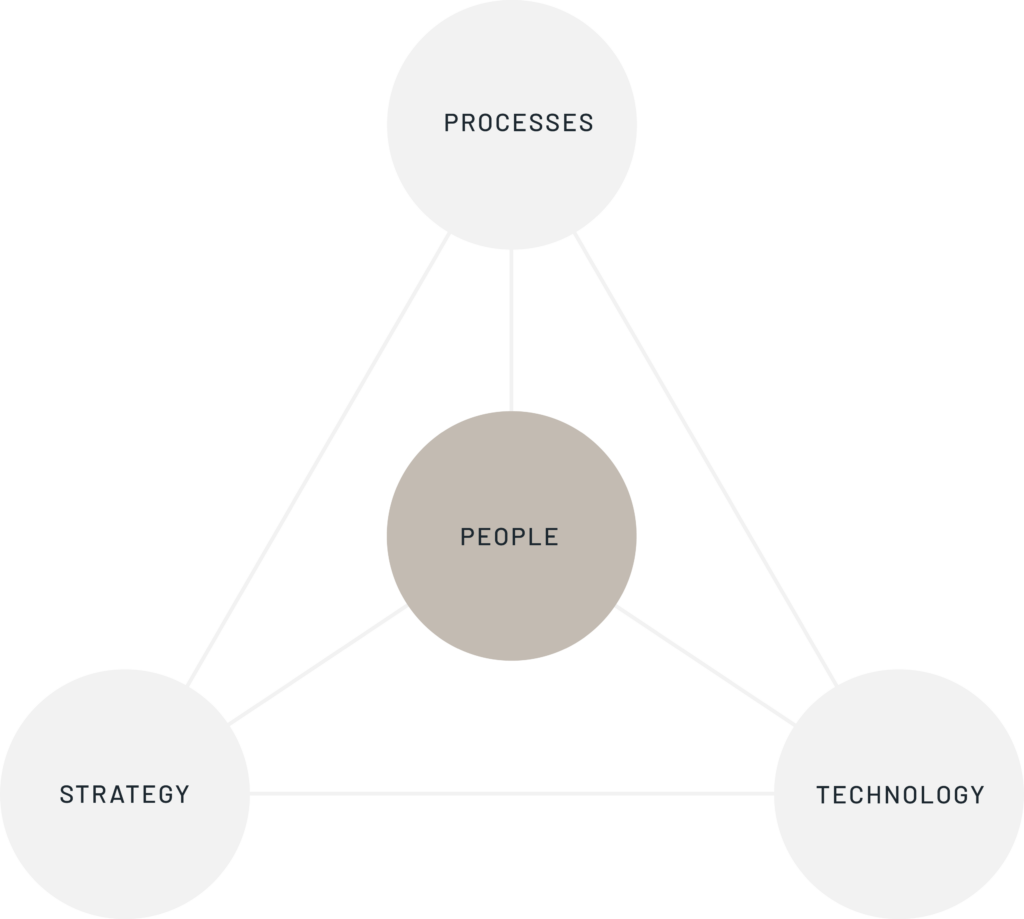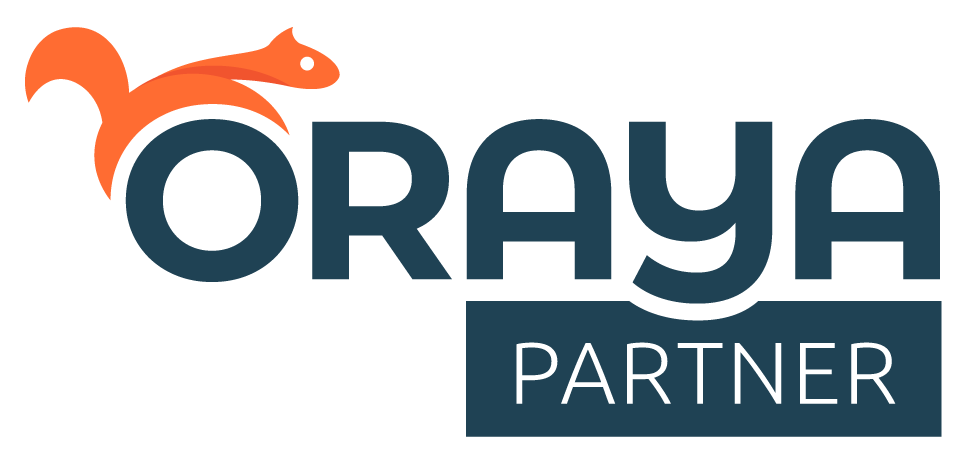When change threatens to be just for show –
the importance of people during the price change process.
The similarity between the movie "Home alone” and the current pricing challenges is amazing. As mentioned in the first part, similar to the movie, important components get unconsciously but increasingly forgotten during the planning and implementation of the pricing journey.
Have you ever wondered what would have happened if Kevin’s parents had had digital support during the planning and implementation phases of their holiday process? A GPS tracker for the kids, for example, or an app that coordinates the planning process and identifies gaps.
Would things have played out differently? Would Kevin not have been left behind? Do digital aids really make that much of a difference?
The answer is simple: things would have been much easier – provided the aids had been applied in the right places and the users able to understand and employ them appropriately.
The more important question is, what would it have taken for Kevin’s parents to adopt the new technology? Would they have needed someone to explain the technology, the innovation and how to use it, to accompany them on their journey toward this – for them – ground-breaking change? Someone to help them understand the benefits so that they actively request the change, as opposed to merely going along with it?
Many companies are facing this exact problem:
increasing digital pressure is forcing them to react swiftly to competitor prices; likewise, customer and business partner demands are rising. What remains is a loud and clear call for change and the speed and digitalisation that accompanies it.
In pricing, change is heavily influenced by professional, automated pricing solutions, electronic shelf labels and other technological aids.
However, identifying and implementing a systematic solution that employs the right pricing tools, strategies and processes is only the first step towards a company’s pricing transformation; after all, transformation always brings about major changes that in turn affect the employees.

We need to create an environment that helps shape and define the change process.
Changing strategies and processes is relatively easy. Changing the people who have to support and implement these changes is a bit more challenging. Whether a change process is a holistic success or not is closely related to the employees’ long-term conviction – of executives in particular, as they often act as role models.
Failure to recognise the important role people play in the change process often results in a severe lack of willingness to truly implement change.
At worst, this creates an illusion, something that looks good on paper; a closer look reveals old structures and behaviours. So it’s hardly surprising when the company finds itself back at square one, now additionally facing frustrated staff and more pressure from the top.
So what do we need to do to motivate employees, particularly when it comes to the price change process?
If we take a look at most companies, we can see that many of them are just getting started. Prices are entered into and maintained in Excel sheets, taking a number of factors into account, such as purchasing prices, sales and various competitor data. These data are gathered with painstaking attention to detail and entered into the templates, while sales and turnover are provided by the controlling department.
People are at the heart of these processes, as initiators and doers, who as creators of the processes have a complete overview. Control goes hand in glove with this way of working: control over the process and the results, but over information as well, specifically over information that may not have been disclosed when it should have been.
This is about to change. For example, by introducing a pricing tool that uses a range of parameters to automatically calculate prices and make suggestions. Matching competitor data by hand becomes a thing of the past; reports and forecasts are compiled immediately. This speeds things up, creates more transparency and results in more attractive prices.
During change processes in pricing, many companies only look at the process itself; in other words, they invest time in teaching colleagues how to use the new software. Which buttons need pushing? Which reports can be standardised or customised? As the name implies, key user trainings focus on the users, but they see them as precisely that: as users, not as people. The question of why change is necessary in the first place is never answered; besides, answering the question at this point would be far too late.
This short example intends to illustrate why change management needs to start at a much earlier stage in pricing, namely prior to the change itself, and thus right at the start of the project, the start of the journey:
That is, before the actual change is due and thus at the very beginning of the project - at the beginning of the journey:
In my first blog post, I discussed how pricing can be compared to a journey. And we can even take it one step further and compare this journey to a flight, dividing it into similar sections.
A flight, for example, comprises three steps:
check-in, the flight itself and check-out.
We can apply these three steps to change management in pricing:
Check-In:
In light of the depth and breadth of the influence pricing has on a company, both within and without, we need to make sure our passengers are all on board. This means ensuring stakeholders have been defined and informed of the upcoming journey. More importantly, we need to make sure that the stakeholders all understand why this journey is necessary. The question of ‘why’ is at the fore here, as is the question of ‘who’.
This step is tremendously important, as it helps ensure people don’t feel left out or that their value to the company has been overlooked. Just as importantly, we need to emphasise the scale of the project and explain the necessity of teamwork, something that is essential to pricing.
Evoking team spirit is the foundation for improving how we promote the ‘one goal’ we are all working towards; the goal we should be focusing on, supporting one another along the way. Likewise, we need to resolve any disagreements/conflicting objectives that typically exist between different departments beforehand; everyone needs to accept the chosen strategy before they start implementing change.
This phase is predestined for questioning the organisation as such. Do we need our own pricing department and how should it be structured and/or incorporated into the organisation? Which tasks should the department assume and which tasks will remain in the original organisational unit (e.g. product management)? Not having a team in place can lead to bottlenecks during the project. The change process takes more time and effort and may be less effective, and enforced less, without a designated team. Especially during the development phase, it therefore makes sense to implement a team that supports, refines and enforces the new route 100% from day one, simply as this is its role.
The flight:
Every change process needs rules, especially when several stakeholders, departments and possibly even companies are involved. Just like on an aeroplane, where everyone has their assigned seat, the process needs structure to ensure it runs smoothly.
Establishing process guidelines and standards for change management as a whole, as well as for individual sub-operations, is just as necessary as the management of mutual expectations while performing the tasks.
Transparent communication, both between the teams and within them, is key to successful change management – especially when it comes to pricing, as this is often a subject of ‘heated discussion’ and a ‘time-critical matter’.
This requires regular meetings to review and align the status, to inform everyone involved of challenges and to develop solutions. These meetings in turn prevent people from feeling left out, improve team work and involve everyone in the problem-solving process. Keeping the parties involved up to date should be part of the process, as this creates awareness and a shared understanding throughout the organisation.
Even if the focus of the project is currently on a different aspect or area of responsibility: always talk to everyone involved. You will need as many allies with a direct/indirect influence on pricing as possible. This will ensure that people feel as if change is something they want as opposed to something that has been forced upon them.
And ultimately, this also includes an overarching communication concept. Structured and regular communication via newsletters that inform the organisation of innovations and best practices from the test groups. Sharing information takes a bit of effort, on the other hand, it drastically increases team spirit and often acts as a motivator. Be sure to talk about things that aren’t working and/or areas that are hitting obstacles as well. This creates trust and tolerance within the organisation; it also helps unfold potential while at the same time providing a platform.
Check-out:
Once the plane has landed, it is important to find out how people experienced their flight, to assure quality and to incorporate improvements as quickly as possible.
The same applies to pricing. Set up regular meetings with the team to openly and honestly reflect on how the change process has been implemented. Have expectations been met? Where did problems arise? How were they handled? To what extent have monetary and strategic objectives been met? Are there any open actions, have follow-up projects emerged?
Listen to the feedback the stakeholders provide and integrate it into further planning (strategy, technology, processes and employees). Be empathic towards the people involved in implementing change.
During the change process in pricing, it is key that ‘Every employee is part of this journey’ at all times.
#changemanagement #pricing #pricingprojects #projectmanagement #tothepoint #changeprocess #pricingjourney #changeobstacles #pricepointconsulting #pricingconsulting #humanresources
Co-author: Isabelle Wirtz.
Ms Wirtz is an experienced manager in the field of category management and process management. After completing her Bachelor's degree in International Marketing, she assisted several companies in the course of numerous projects in setting up structures and processes. She also supported the implementation of a pricing software and process harmonisation at a well-known and internationally operating pet food retailer with her extensive expertise.


